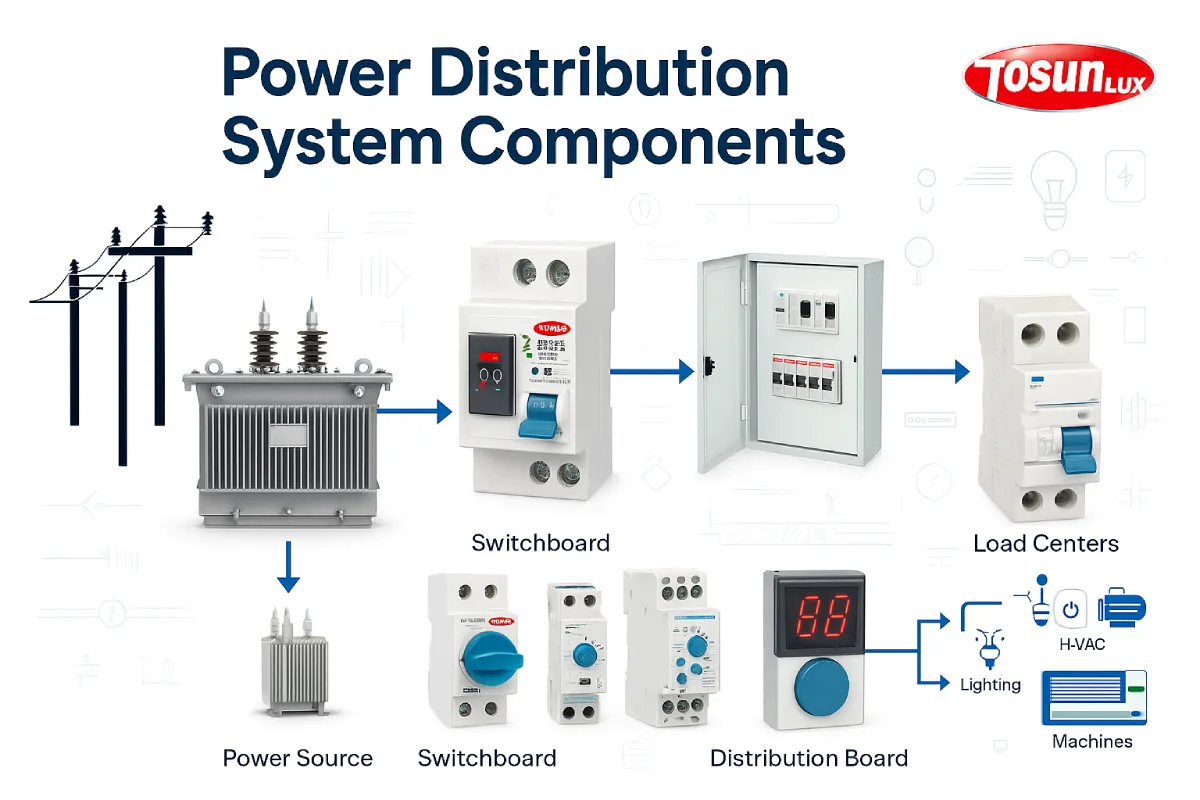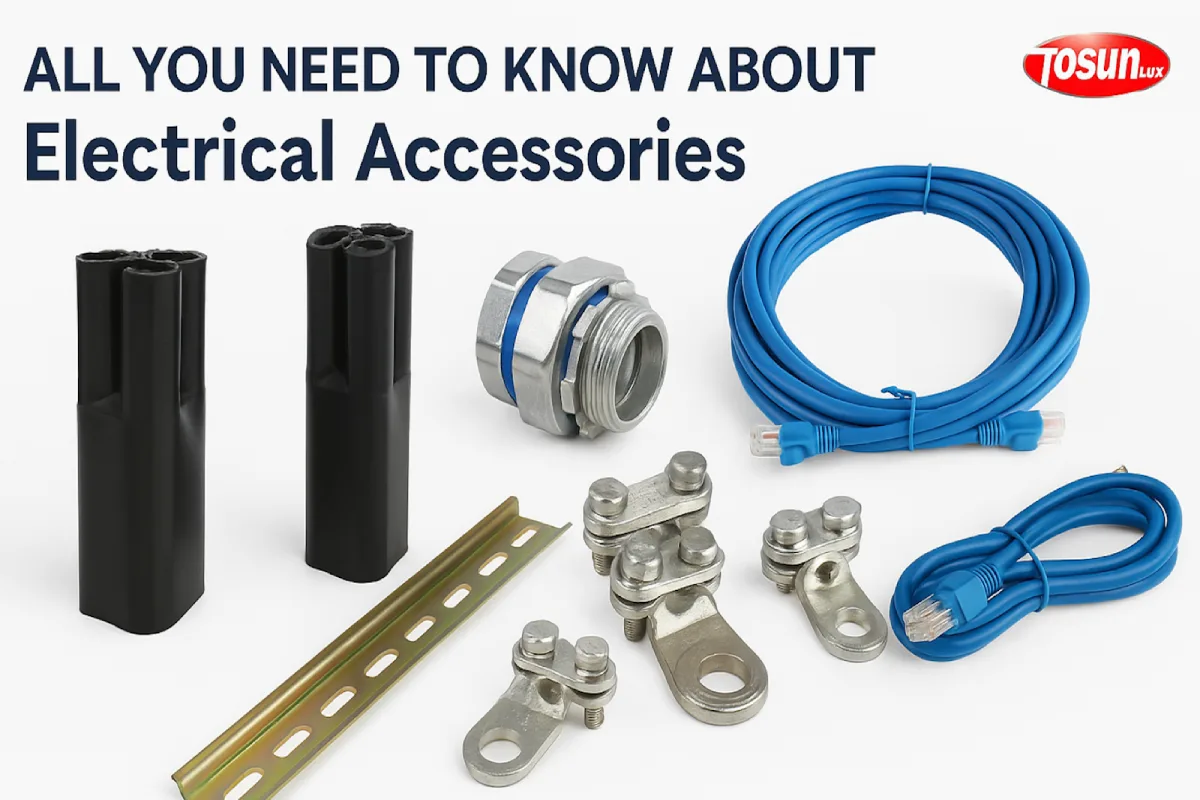How Does A Circuit Breaker Work?
Table of Contents
ToggleHave you ever come across a situation where you are comfortably watching TV or using some other electrical appliance, and the power goes off suddenly?
Well, it is most probably the circuit breaker in your house. When there is a power surge or overload, the circuit breaks to prevent the hazard.
Instead of supplying the overload power to the electrical appliance, the breaker trips to prevent damage. This is the main purpose of a circuit breaker.
It is the core part of the electrical system in your house. A breaker protects your home from power hazards when the current becomes unstable.
If you are curious about how a breaker works, we can help you. In this article, we are going to discuss circuit breaker and show you how it works.
What Is A Circuit?
In electronics, a circuit consists of various components connected by conductive wires. These electronic components include diodes, resistors, and transistors. These components are then connected through conductive traces, allowing electrical current to flow through them.
Each electronic component is connected to another, and the result is an electric circuit. A circuit consists of a closed path or boundary formed by two or more wires. Each wire carries electricity, which must be connected to its positive and negative ends.
The electricity enters your home and reaches the circuit breaker. This device distributes the power to different circuits, i.e., one circuit for the bedroom, one for the kitchen, etc.
There is a separate breaker in each individual circuit to prevent any hazards. It is a part of a circuit that breaks when there is a power surge to stop the flow of current to the appliance.
What Is A Circuit Breaker?
A circuit breaker is a device that automatically shuts off an electrical circuit when a fault is detected. It is an important part of a household’s electrical system. One of the best ways to protect it from damage is to install a circuit breaker.
This electrical switch will interrupt the flow of current whenever it detects a fault. These devices can be useful in homes with multiple electrical outlets. They are also great for protecting electric vehicles.
The basic components of a circuit breaker are the contacts and the arms. The contact assembly is made of highly conductive metals, and the arc is created when an electrical current crosses the gap between two contacts.
Once the contact arms are opened, the arc is extinguished. Because a circuit breaker can’t restore power to a damaged circuit if it tripped, it must be designed to prevent arcs.
A basic circuit breaker consists of a toggle handle and two wires connected to an electromagnet or bimetallic strip. The switch has two ends that connect to the hot wire in the circuit.
When the switch is in the “on” position, electricity flows from the bottom terminal to the moving contact. Then the switch turns itself off after tripping.
How Does A Circuit Breaker Work?
If you have ever wondered, “how does a circuit breaker work?” you are not alone. Many people are curious as to how the devices are made and what their role is in the electrical system.
Here’s an explanation of what circuit breakers do. They protect electrical systems and prevent fires by interrupting the flow of power.
In a nutshell, a circuit breaker is a device that features a series of moving contacts connected by a spring. During an overload, the operating coil becomes charged and stops the flow of power. The moving contacts are connected by a plunger and release the energy.
Before a circuit breaker can open, heavy current flows through its contacts. As the contact area rapidly decreases, the amount of current flowing through it is decreased. This increase in current density leads to a high rise in temperature.
The entire breaker device can be damaged by this huge ignition. This is why circuit breakers are designed to shut down power when they detect high current levels. The safety of electrical circuits depends on the ability of these circuit breakers to protect their users.
A circuit breaker contains two main parts. The shunt trip cuts off the power circuit and the control circuit to prevent coil burnout. A circuit breaker with an under-voltage trip opens with a delay or without delay when the power supply voltage gradually decreases.
This causes a huge current to pass through the breaker, causing it to malfunction. If it malfunctions, it is important to know how a circuit breaker works.
The breaker uses a metal blade to close the gap and allows the current to pass through it. When it encounters a large sudden draw on the circuit, it can melt the inside of the fuse.
This stops the flow of electricity and ensures that the breaker is safe. This process is known as the short circuit. This mechanism is important for protecting the electrical system. If a short circuit occurs in the electrical system can cause a lot of damage, and it may be unreliable.
Why Do Circuit Breakers Trip?
Circuit breakers may trip for a variety of reasons, including overload or ground fault. Overloading a circuit can cause the internal mechanism to overheat, causing a break in the electricity supply.
A ground fault, on the other hand, occurs when an active wire touches the ground wire and excessive current flows into the earth. When this happens, the electricity flow is disrupted, resulting in a trip.
One of the most common reasons circuit breakers trip is because there is a problem with the electrical wiring. Overload occurs when too many appliances are plugged into a single circuit. This is usually a two-wire circuit that is used for a TV, vacuum cleaner, and lamp.
If a single outlet is tripping the breaker, there is an overload. This overload can occur when a circuit is overloaded. It’s important to understand that overload can occur on the same circuit as a television.
To determine the cause of an overload, try unplugging the items on the circuit. If a regular problem is occurring, you may need to install a new outlet or dedicate a separate circuit for each appliance.
Another reason for a circuit to trip is a faulty outlet. The power source itself could be the cause of an overloaded circuit. While an overload can be caused by an appliance, it can also be caused by a pre-existing component. In these cases, it is best to contact a qualified electrician to repair the problem.
Tel: +86-577-88671000
E-mail: ceo@tosun.com
Skype: tosunelectric
Wechat: +86-139 6881 9286
WhatsApp: +86-139 0587 7291
Address: Room No.1001 Wenzhou Fortune Center,Station Road, Wenzhou, China
REQUEST A QUOTE
WhatsApp us
 : +86-139 0587 7291
: +86-139 0587 7291 English
English Español
Español Русский
Русский Français
Français العربية
العربية Português do Brasil
Português do Brasil Українська
Українська Türkçe
Türkçe Polski
Polski Nederlands
Nederlands Italiano
Italiano Bahasa Indonesia
Bahasa Indonesia हिन्दी
हिन्दी اردو
اردو አማርኛ
አማርኛ Հայերեն
Հայերեն ไทย
ไทย Монгол
Монгол فارسی
فارسی Shqip
Shqip Ελληνικά
Ελληνικά


